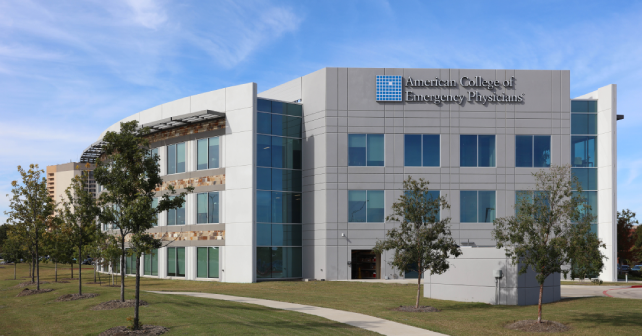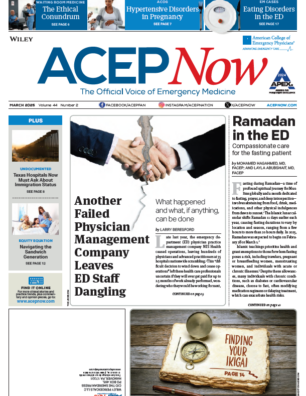
ACEP issued a statement last week on behalf of 40,000 emergency physician members who care for those in our country during their times of deepest need.
Explore This Issue
ACEP Now: Vol 44 – No 02 – February 2025ACEP respectfully called on the Administration to recognize the critical importance of a robust federal health infrastructure in safeguarding the prosperity and security of our nation, and the health and well-being of our people.
Emergency physicians proudly serve as the country’s safety net, providing high-quality care to more than 150 million patients annually. This safety net is reinforced in large part by the work of numerous federal agencies. For example, the Administration for Strategic Preparedness and Response (ASPR) enhances our readiness to respond to disasters, mass casualty events, and national security threats, such as bioterrorism, chemical, or even nuclear attacks. The Centers for Medicare and Medicaid Services (CMS) provides vital data, payment frameworks, and resources that are mission-critical to caring for all Americans, particularly rural populations and especially our seniors who have earned and deserve the promise of the Medicare program.
Journal Research Looks at Physician Coverage in the ED
A new study published in JACEP Open, one of ACEP’s peer-reviewed publications, asked the question, “Is at least one attending physician (not resident) on duty in the ED 24 h/d?”
The research found that approximately 1 in 13 EDs in the U.S. lack 24 hour, seven-day-per-week physician coverage. The absence of 24/7 attending physician coverage was more common in low-volume EDs and CAHs. Unsurprisingly, the states with the least coverage included those of the Great American West – Montana, North Dakota, and South Dakota. Critical gaps in coverage, largely exacerbated by regional maldistribution of physicians demonstrates the nation’s fallibility in acute, unscheduled care.
ACEP Now recently explored the idea of having an emergency physician in every ER, and prior articles discussed issues with growing the emergency medicine workforce in this region of the country. These observations highlight important gaps in ED care nationally.
Results from the research came from the National ED Inventory (NEDI)-USA survey, sent annually to the ED director of every nonfederal US ED. The 2022 survey (administered in 2023 to all EDs open during 2022) included the physician question. The NEDI-USA database includes basic ED characteristics such as annual visit volume, critical access hospital (CAH) status, rural location, and freestanding ED status.
The 2022 NEDI-USA database identified 5622 EDs, of which 4621 (82%) responded to the 24/7 attending physician question.
Pages: 1 2 3 4 | Single Page




No Responses to “February 2025 News from the College”